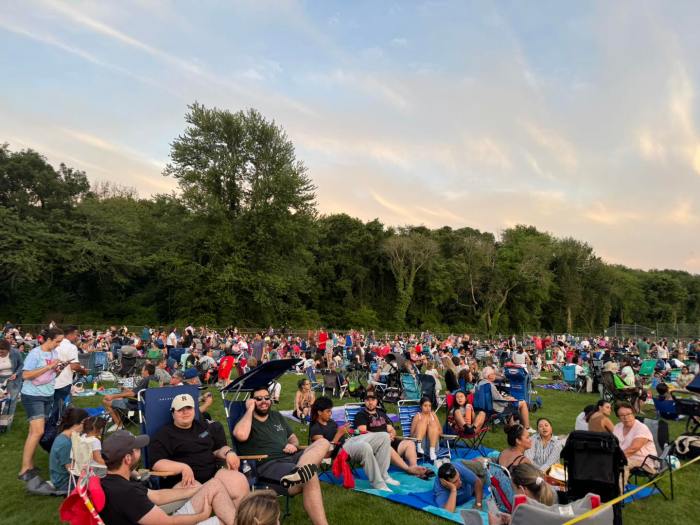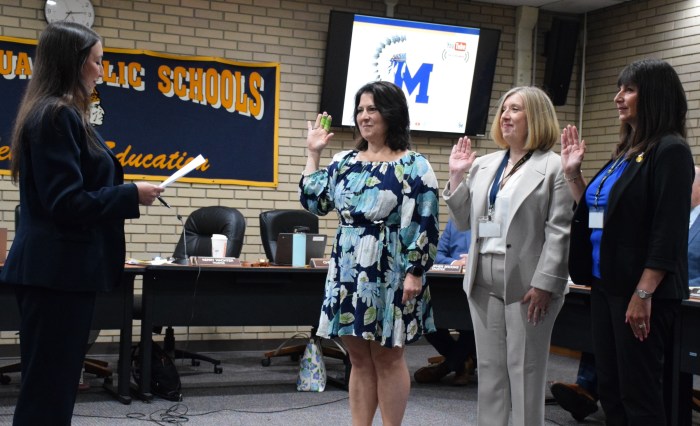
(Photo courtesy of WABC TV)
Fifty years ago, the Apollo 11 spaceflight achieved the unimaginable when it successfully landed humans on the moon. It has been noted as one of the greatest accomplishments in history and many of those who witnessed it remember where they were when it happened to this day.
As you would expect, it took a lot of hard work and dedication to achieve this goal. Just ask Ernest Finamore Sr., a Massapequa resident who worked at Grumman Aerospace for 45 years and played a major role in the creation of the lunar modules used on the mission.
“For seven of those years [at Grumman], I was the inspector of those lunar modules in Bethpage,” said Finamore. “It was quite the project. Things needed be exact and it was challenging. It was only me and a few other guys. It was intense work sometimes. We took off in July 1969, but nine months before, I worked the entire month of October, 12 hours a day. That was quite a stretch.”
Prior to his work on the modules, he worked at a plant on the campus doing production test flying on airplanes. He did that for four or five years before he was approached with the inspection job for various aviation and space exploration tools. It was around 1954 and ’55 that he started working on the lunar module program.
“I started looking at all the parts we made,” said Finamore. “All six lunar modules that are on the moon today, I inspected a lot of stuff on every one of them. Things had to be exact and if we came across a problem, we had to figure it out. We would have to change the design, rebuild it, reinspect it and check it out. We also had a bioengineering program where we had to work with the engineers, testing to the last percentage point. It was good to see. Very exciting.”
In order to successfully inspect and work on these modules, Finamore said that they needed to work in a clean, pressurized room with no dirt or dust allowed to enter the room. All the staff, in handling these precious materials, had to wear cotton gloves when touching these parts.
“We didn’t want any germs to transfer on to the unit to bring to the moon,” said Finamore. “Now, there were some operations that you can’t do with your gloves on. So, the mechanic had to call the inspector. He would tell me the installation that he would want to [implement] with his gloves off. So we do our work, we check it out, we spray it down with trichlorosilane to get rid of any hand oil or germs, blow dry it and then take a cotton swab to it to make sure there was nothing on it.”

All of this equipment was sent down to Florida where the mission was going to take off. On July 20, 1969, the moment came when the work Finamore and the Grumman Aerospace was going to be put in action.
“When it happened, I was home that day,” said Finamore. “They called me on the phone once or twice. As it was happening, I was watching the landing on the television. People were knocking on the door, calling me and I found out my daughter fell off her bike while riding it, so I needed to go pick her up. But I did catch the reruns of it. They showed [Neil Armstrong] stepping onto the moon’s service. I thought ‘Oh my god, it really happened the way it was suppose to happen. Now, we got to get them home.’”
The mission was successful, as the astronauts were able to explore the moon. Finamore worked the day the astronauts got back to Earth to make sure everything went smoothly. After Apollo 11, he worked on many more projects, including inspecting tools for the Apollo 13 mission and other space exploratory missions. Years later, Finamore volunteered at the Cradle of Aviation Museum, giving lectures on the creation of the lunar module. Despite the struggles in working on this project, he is grateful for the experience and to have been part of history.
“Its always nice to be recognized that I did this,” said Finamore. “People like to know information. I am just lucky to have been one of the guys in that area who did the job. Heck, if they were building paddleboats, I would be doing that too.”
Finamore will appear on a WABC special Moon Landing 50: Long Island’s Contribution on the anniversary of the landing Saturday, July 20, at 7 p.m.






























